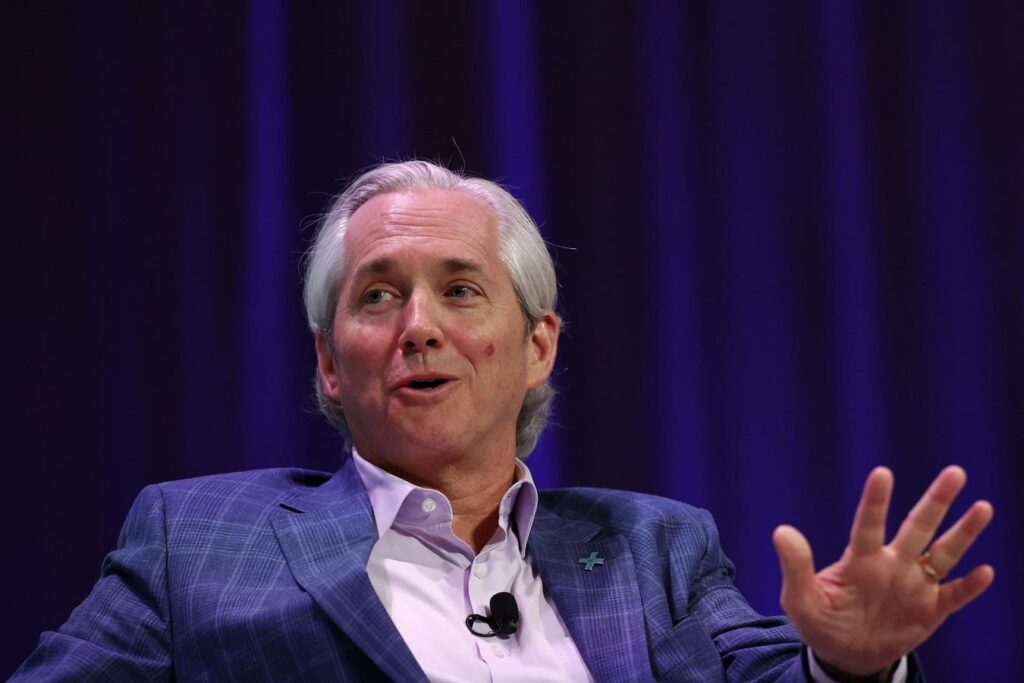For a startup trying to commercialize new nuclear technology, getting Amazon’s backing is a powerful thing. After the announcement in October that the e-commerce giant was leading a $500 million funding round for X-energy, a developer of a small modular reactor, other investors clamored to get in, too.
On Thursday, X-energy said it had raised an additional $200 million from boldface names including billionaire Laurene Powell Jobs’ impact-focused venture capital fund, Emerson Collective, and the quant juggernaut Jane Street Capital.
The Rockville, Maryland-based company, controlled by the space-focused billionaire Kam Ghaffarian, says that its total C Series haul of $700 million gives it enough money to get through the regulatory approval process for its reactor design and build the first one, at a Dow chemical plant in Texas, as well as complete the first full-scale manufacturing line for its fuel pellets.
Amazon also said it would help fund the development of a 320-megawatt pod of four X-energy reactors with Washington State utility Energy Northwest, to supply its power-hungry data centers. That’s a landmark commitment to new nuclear technology that spoke loudly to other investors, according to X-energy CEO J. Clay Sell. Just agreeing to buy power isn’t enough to finally get a small commercial nuclear reactor built, he said. “What is sufficient is someone that will put in the risk capital to actually see these projects constructed.”
X-energy has now raised about $1.1 billion, making it the best-funded of 45 startups developing small nuclear reactors, according to Pitchbook. However, TerraPower, with $1 billion, boasts the backing of the world’s 16th-richest person, Bill Gates.
X-energy is attempting to commercialize what’s known as a pebble bed reactor, with pellets of uranium encased in ceramic and graphite. If there’s a failure in any part of the reactor’s systems, those casings won’t melt and the radiation will be contained, the company says. It’s a high temperature design – it will produce a large quantity of steam as well as 80 megawatts of electricity, both of which Dow plans to use at its plant.
The reactor is small enough to fit on a tractor-trailer. That will allow X-energy to build them in a factory and deliver them to buyers already assembled, dramatically reducing time for construction, which has been the most expensive element of setting up a nuclear power plant.
Sell is hoping to win approval for the design from the Nuclear Regulatory Commission in the next two-and-a-half years, and get the Dow reactor online in the early 2030s.
Of course, one constant in the nuclear industry has been that schedules and budgets are made to be busted. At Georgia’s Vogtle plant, the first new U.S. reactor in decades was turned on in 2023, seven years late and $17 billion over budget.
Developers of small modular reactors have promised that they will be safer, as well as faster and cheaper to build. So far those promises haven’t been realized. In 2023 Utah utilities pulled the plug on what was expected to be the first commercial SMRs built in the U.S. — a collection of six reactors from publicly traded NuScale. They were spooked by ballooning construction costs, which had risen from an estimated $5.3 billion in 2021 to $9.3 billion.
X-energy has also fessed up to cost increases. In a 2023 filing with the Department of Energy related to a $80 million grant it received for the Energy Northwest project, the company doubled its cost estimates for its reactor to a range of $4.75 billion to $5.75 billion. It cited inflationary pressures, higher interest rates and supply chain constraints. Sell declined to share current cost estimates, but he said the fact that Dow and Amazon have chosen X-energy for the only current commercial SMR projects in the U.S. speaks for itself.
“You can conclude based on our customer success that we are competitive to other options in the marketplace,” he said.
Like all of Ghaffarian’s companies, X-energy is also focused on enabling humankind to expand into the stars. X-energy has won $5 million in federal funding with another Ghaffarian-controlled company, the lunar lander maker Intuitive Machines, to develop a portable reactor for use on the moon. It’s also aiming to adapt its technology to propel spacecraft.
X-energy’s design looks solid to Daniel Kammen, a nuclear physicist and director of the Renewable and Appropriate Energy Laboratory at the University of California, Berkeley.
“They have one of the best combinations of physics and engineering and now money of almost anybody,” he said. But Kammen is skeptical that building multiple SMRs will turn out to be cheaper than one bigger conventional plant, and that they can compete with the falling price of renewable energy.
Given the interest of billionaires in SMR technology, he believes they will get built and “some companies will get rich.” But “I remain very skeptical that just building a smaller reactor will somehow solve all of nuclear’s problems,” he said.
Read the full article here
